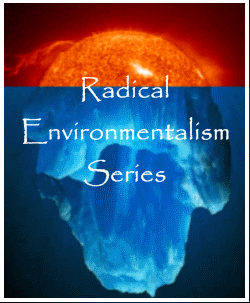When I was in junior high and high school, we were taught the scientific process – repeatedly. You start with a hypothetical statement, such as “Do potato skins contain more vitamin C than potato flesh?” Under no circumstances are you able to draw any early conclusions without first proving your assumption. I would have been graded down severely if I had just assumed that potato skin contained more vitamin C and moved onto a follow-up question (I would have been wrong, too, as potato flesh actually has a higher concentration of the vitamin than the skin – I got to perform this experiment in Chemistry).
But science class back then never taught us that there will be times when science will mix with politics. This dangerous combination often throws aside the deductive process in favor of principles more akin to marketing (which some people will say is the same as lying). Making bold statements without the backing of facts becomes necessary in order to divert funds to pet political projects. It’s all about the money.
Nowhere is this more prevalent than in the world of environmental “science”. Environmental “experts” and prominent politicians make claims which go largely untested – all for the sake of scaring people into spending money on potentially useless programs. Here are a couple of examples.
Al Gore intimates in his film An Inconvenient Truth that we only have about ten years to act on global warming before it will be too late to make a reversal. This statement was so presumptuous that Ru
 sh Limbaugh started a ten-year clock on his website – counting down from ten years so that we will be prompted to evaluate just where things are at the end of that time period. Look at Gore’s statement in light of the same facts that he presented in the very same movie – that the average recorded temperature has risen less than one degree Celsius over the last 140 years (see his graph at the left)! It seems ludicrous to draw the conclusion that at this rate, we will be headed for an irreversible torching of the planet in just ten years time. But the statement was made by Mr. Gore, and he was lauded as a great environmentalist (and, incredibly, they gave him the Nobel prize).
sh Limbaugh started a ten-year clock on his website – counting down from ten years so that we will be prompted to evaluate just where things are at the end of that time period. Look at Gore’s statement in light of the same facts that he presented in the very same movie – that the average recorded temperature has risen less than one degree Celsius over the last 140 years (see his graph at the left)! It seems ludicrous to draw the conclusion that at this rate, we will be headed for an irreversible torching of the planet in just ten years time. But the statement was made by Mr. Gore, and he was lauded as a great environmentalist (and, incredibly, they gave him the Nobel prize).Where was the scientific mistake made? There are two that I can see. First, Gore assumes that a 140-year trendline showing a rise of less than one degree Celsius will continue to trend in the same direction at the same rate, unless something is “done”. Now, 140 years may seem like a lot, but it is not nearly enough to build a case of irreversible global warming. For example, a trend chart of General Motors stock price value would show a healthy and fairly steady increase over time, from 1933 to 2006. A well-meaning investor might look at that chart and conclude that the trend must continue. They would be wrong. GM stock has dropped from a value of $40 per share in 2006 to just over a dollar today in 2009 (that was true when I originally wrote this entry, now it’s worth nothing). Did anyone see this coming before the shares started to dive? Few people had the foresight to avoid this loss. It was a wholly unexpected event, and there were factors involved which were much more complex than a simple algebraic linear rise.
Gore’s second mistake is assuming that we know the cause of global warming. He pins the warming trend as being relative to the carbon-dioxide levels in the atmosphere, and he assumes that carbon dioxide is primarily caused by human activity. Both assumptions are specious, and are not proven fact – not by a long shot. Do we claim to understand all of the factors that affect global temperatures? Here are a few – sunspot activity, ocean currents, El Niño, La Niña, the Atlantic Multi-Decadal Oscillation, and the Maunder Minimum. Now, please show me the study that proves that human activity swamps out these factors, and is the prime contributor to global warming. I would listen, truly I would, if the claim could be supported. The science simply isn’t there.
But lack of scientific evidence doesn’t stop people like Ted Danson from saying, in 1988, that “we have ten years to save the world's oceans”. Do the math – that was twenty-one years ago. So are we too late to do anything now? Or was Ted Danson wrong?
If you want to win me over to an idea or a cause, here is what you must do. To begin with, give me unimpeachable facts upon which to build a case – in the global warming debate, I need to see global temperatures from around the globe, not just in a few select locations, and preferably hard evidence over several hundred years. Next, from this data you must build models which duplicate the behavior seen in the data. For example, a good global warming model needs to be able to match the data obtained in the first step. To model the hype distributed by the environmental crowd, a good model would be able to relate the Industrial Revolution over the last hundred years to carbon dioxide levels during that period, and could correlate global temperature rises to the carbon dioxide level. If mankind is the greatest influence on warming, then I would expect to see a relatively flat global temp profile for the last several hundred years, followed by a sharp rise over the last hundred years. There should also be direct correlation to unusual events in history, such as volcanic eruptions which may cause temporary spikes in the data.
Finally, it is important to put the model to the test in the future. Does it accurately predict events over the next few years and on into decades? If not, then the model may be incorrect, and require revision. Some, like Ted Danson, will say that we have no time for this rigor, but it is equally irresponsible to radically alter public policy and business plans based on nothing more than rash statements and “feel-good” ethics.
For me, I personally believe that other factors, such as sunspot activity, overpower any changes that man makes to the climate. But I also am willing to concede that this is not yet proven. Will the other side make the same concession and work to follow the scientific process? Somehow, I think that is just a dream.
************************
Next in this series.......
or
Back to Part 1 of this series...











1 comment:
Alan, Creating this model will be very difficult with all the external and internal factors which we can/cannot calculate.
The governments should take a practical approach in measuring effects of pollution, CO2 emissions, etc before reducing them.
I come from the other side of the planet and I believe in providing food, shelter, electricity and education to 1 Billion people (Total No of people below poverty line) before I think of climate change or global warming. We need to provide opportunities to these people to eliminate hunger, diseases, illiteracy and religious fundamentalism.
Lets save humanity first before we think of saving the planet..
Post a Comment